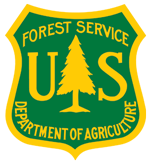-
 Faustian bargains? Restoration realities in the context of biodiversity offset policies
Faustian bargains? Restoration realities in the context of biodiversity offset policies
-
The science and practice of ecological restoration are increasingly being called upon to compensate for the loss of biodiversity values caused by development projects. Biodiversity offsetting—compensating for losses of biodiversity at an impact site by generating ecologically equivalent gains elsewhere—therefore places substantial faith in the ability of restoration to recover lost biodiversity. Furthermore, the increase in offset-led restoration multiplies the consequences of failure to restore, since the promise of effective restoration may increase the chance that damage to biodiversity is permitted. But what evidence exists that restoration science and practice can reliably, or even feasibly, achieve the goal of ‘no net loss’ of biodiversity, and under what circumstances are successes and failures more likely? Using recent reviews of the restoration ecology literature, we examine the effectiveness of restoration as an approach for offsetting biodiversity loss, and conclude that many of the expectations set by current offset policy for ecological restoration remain unsupported by evidence. We introduce a conceptual model that illustrates three factors that limit the technical success of offsets: time lags, uncertainty and measurability of the value being offset. These factors can be managed to some extent through sound offset policy design that incorporates active adaptive management, time discounting, explicit accounting for uncertainty, and biodiversity banking. Nevertheless, the domain within which restoration can deliver ‘no net loss’ offsets remains small. A narrowing of the gap between the expectations set by offset policies and the practice of offsetting is urgently required and we urge the development of stronger links between restoration ecologists and those who make policies that are reliant upon restoration science. Keywords:Compensatory habitat - Conservation policy - Mitigation banking - Environmental risk - No net loss - Restoration success
Located in
Resources
/
Climate Science Documents
-
 Forecasting the response of Earth’s surface to future climatic and land use changes: A review of methods and research needs
Forecasting the response of Earth’s surface to future climatic and land use changes: A review of methods and research needs
-
In the future, Earth will be warmer, precipitation events will be more extreme, global mean
sea level will rise, and many arid and semiarid regions will be drier. Human modifications of landscapes
will also occur at an accelerated rate as developed areas increase in size and population density. We now
have gridded global forecasts, being continually improved, of the climatic and land use changes (C&LUC)
that are likely to occur in the coming decades. However, besides a few exceptions, consensus forecasts do
not exist for how these C&LUC will likely impact Earth-surface processes and hazards. In some cases, we
have the tools to forecast the geomorphic responses to likely future C&LUC. Fully exploiting these models
and utilizing these tools will require close collaboration among Earth-surface scientists and Earth-system
modelers. This paper assesses the state-of-the-art tools and data that are being used or could be used to
forecast changes in the state of Earth’s surface as a result of likely future C&LUC. We also propose strategies
for filling key knowledge gaps, emphasizing where additional basic research and/or collaboration
across disciplines are necessary. The main body of the paper addresses cross-cutting issues, including the
importance of nonlinear/threshold-dominated interactions among topography, vegetation, and sediment
transport, as well as the importance of alternate stable states and extreme, rare events for understanding
and forecasting Earth-surface response to C&LUC. Five supplements delve into different scales or process
zones (global-scale assessments and fluvial, aeolian, glacial/periglacial, and coastal process zones) in
detail.
Located in
Resources
/
Climate Science Documents
-
 Impacts of mountaintop mining on terrestrial ecosystem integrity: identifying landscape thresholds for avian species in the central Appalachians, United States
Impacts of mountaintop mining on terrestrial ecosystem integrity: identifying landscape thresholds for avian species in the central Appalachians, United States
-
Reclaimed mine-dominated landscapes (less forest and more grassland/shrubland cover) elicited more negative (57 %) than positive (39 %) species responses. Negative thresholds for each landscape metric generally occurred at lower values than positive thresholds, thus negatively responding species were
detrimentally affected before positively responding species benefitted. Forest interior birds generally
responded negatively to landscape metric thresholds, interior edge species responses were mixed, and early
successional birds responded positively. The forest interior guild declined most at 4 % forest loss, while
the shrubland guild increased greatest after 52 % loss
Located in
Resources
/
Climate Science Documents
-
 Invited Review: Quantifying surface albedo and other direct biogeophysical climate forcings of forestry activities
Invited Review: Quantifying surface albedo and other direct biogeophysical climate forcings of forestry activities
-
By altering fluxes of heat, momentum, and moisture exchanges between the land surface and atmosphere, forestry and other land-use activities affect climate. Although long recognized scientifically as being important, these so-called biogeophysical forcings are rarely included in climate policies for forestry and other land management projects due to the many challenges associated with their quantification. Here, we review the scientific literature in the fields of atmospheric science and terrestrial ecology in light of three main objectives: (i) to elucidate the challenges associated with quantifying biogeophysical climate forcings connected to land use and land management, with a focus on the forestry sector; (ii) to identify and describe scientific approaches and/or metrics facilitating the quantification and interpretation of direct biogeophysical climate forcings; and (iii) to identify and recommend research priorities that can help overcome the challenges of their attribution to specific land-use activities, bridging the knowledge gap between the climate modeling, forest ecology, and resource management communities. We find that ignoring surface
biogeophysics may mislead climate mitigation policies, yet existing metrics are unlikely to be sufficient. Successful metrics ought to (i) include both radiative and nonradiative climate forcings; (ii) reconcile disparities between biogeophysical and biogeochemical forcings, and (iii) acknowledge trade-offs between global and local climate benefits. We call for more coordinated research among terrestrial ecologists, resource managers, and coupled climate modelers to harmonize datasets, refine analytical techniques, and corroborate and validate metrics that are more amenable to analyses at the scale of an individual site or region.
Located in
Resources
/
Climate Science Documents
-
 Scenarios of future land use change around United States’ protected areas
Scenarios of future land use change around United States’ protected areas
-
Land use change around protected areas can diminish their conservation value, making it important to
predict future land use changes nearby. Our goal was to evaluate future land use changes around protected
areas of different types in the United States under different socioeconomic scenarios. We analyzed
econometric-based projections of future land use change to capture changes around 1260 protected
areas, including National Forests, Parks, Refuges, and Wilderness Areas, from 2001 to 2051, under different
land use policies and crop prices. Our results showed that urban expansion around protected areas
will continue to be a major threat, and expand by 67% under business-as-usual conditions.
Concomitantly, a substantial number of protected areas will lose natural vegetation in their surroundings.
National land-use policies or changes in crop prices are not likely to affect the overall pattern of land use,
but can have effects in certain regions. Discouraging urbanization through zoning, for example, can
reduce future urban pressures around National Forests and Refuges in the East, while the implementation
of an afforestation policy can increase the amount of natural vegetation around some Refuges throughout
the U.S. On the other hand, increases in crop prices can increase crop/pasture cover around some protected
areas, and limit the potential recovery of natural vegetation. Overall, our results highlight that future
land-use change around protected areas is likely to be substantial but variable among regions and
protected area types. Safeguarding the conservation value of protected areas may require serious consideration of threats and opportunities arising from future land use.
Located in
Resources
/
Climate Science Documents
-
Service and partners announce science-based tool to help prioritize and target fish habitat conservation
-
The U.S. Fish and Wildlife Service and North Atlantic Landscape Conservation Cooperative (LCC) today announce the availability of an online tool that enables users to target and prioritize fish habitat conservation in the face of climate and land use change.
Located in
News & Events
-
 Solar energy development impacts on land cover change and protected areas
Solar energy development impacts on land cover change and protected areas
-
Decisions determining the use of land for energy are of exigent concern as land scarcity, the need for ecosystem services, and demands for energy generation have concomitantly increased globally. Utility-scale solar energy (USSE) [i.e., ≥1 megawatt (MW)] development requires large quantities of space and land; however, studies quantifying the effect of USSE on land cover change and protected areas are limited. We assessed siting impacts of >160 USSE installations by technology type [photovoltaic (PV) vs. concentrating solar power (CSP)], area (in square kilometers), and capacity (in MW) within the global solar hot spot of the state of California (United States). Additionally, we used the Carnegie Energy and Environmental Compatibility model, a multiple criteria model, to quantify each installation according to environmental and technical compatibility. Last, we evaluated installations according to their proximity to protected areas, including inventoried roadless areas, endangered and threatened species habitat, and federally protected areas. We found the plurality of USSE (6,995 MW) in California is sited in shrublands and scrublands, comprising 375 km2 of land cover change. Twenty-eight percent of USSE installations are located in croplands and pastures, comprising 155 km2 of change. Less than 15% of USSE installations are sited in “Compatible” areas. The majority of “Incompatible” USSE power plants are sited far from existing transmission infrastructure, and all USSE installations average at most 7 and 5 km from protected areas, for PV and CSP, respectively. Where energy, food, and conservation goals intersect, environmental compatibility can be achieved when resource opportunities, constraints, and trade-offs are integrated into siting decisions.
Located in
Resources
/
Climate Science Documents























